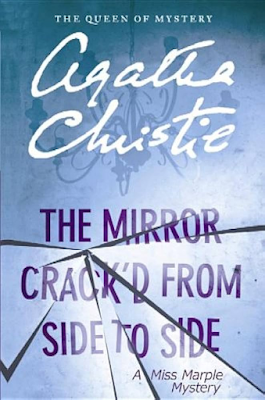"It may be only blackmail,' said the man in the taxi hopefully. The fog was like a saffron blanket soaked in ice-water. It had hung over London all day and at last was beginning to descend. The sky was yellow as a duster and the rest was a granular black, overprinted in grey and lightened by occasional slivers of bright fish colour as a policeman turned in his wet cape."
It’s a brave author who chooses to follow in the footpath of Charles Dickens and open a novel with a description of a London fog. But Margery Allingham does just that (much more succinctly than her predecessor did in Bleak House), and she manages to sustain the eerie, malevolent atmosphere created by the fog for much of The Tiger in the Smoke. Allingham's fog, like Dickens', is virtually a character in its own right, providing a cover for criminals, deceiving those who hunt them, and clouding thoughts.London fog, or smog - also known as a pea-souper or London Peculiar - was common throughout the 19th century and during the first half of the following century. It was a phenomenon caused by industrial pollution and domestic coal fires, and was thick, yellow and choking, enveloping the city and reducing visibility. In December 1952 - the year this novel was published - air pollution, combined with unusual weather conditions, brought about a particularly bad four-day smog which, according to records of the time, caused the death of some 4,000 people from respiratory complications, and severe illness in as many as 100,000 more. The incident prompted politicians to draft new legislation, and the first Clean Air Act became effective in 1956. Obviously, Allingham's novel must have been written and published earlier in the year, but it does show she was familiar London pea-soupers.
Anyway, I digress. The Tiger in the Smoke is one of the author's later novels, featuring her upper class sleuth Albert Campion and his sidekick,the magnificently named Magersfontein Lugg. Campion's cousin, beautiful young war widow Meg Elginbrodde is now engaged to another man, but has been receiving blurry photographs showing a man who looks like her first husband... So is it him? And if so is he still alive, and why hasn't he contacted Meg? And if he is dead, who is the man in the photograph, and what does he want from Meg? Campion has been drafted in to help Divisional Detective Inspector Charlie Luke unravel the mystery, which turns out to be much more dangerous than either of them anticipate.
The duo meet Meg at a major London train station, because Meg has received a note on the back of one of the photos telling her to go to Platform 5. She sees a man who looks like her husband Martin, but when she calls to him he runs away. And when the police capture him she realises the man is definitely not Martin. The police get little information out of him, and as they have no evidence to prove he has committed a crime, they release him. But soon after that he turns up in an alley where has been kicked to death whilst wearing Martin Elginbrodde's old jacket.
At the same time Meg's fiance, Geffrey Levett, has disappeared and no-one has any idea where he is, and the police suspect he may be involved in the fake photos, though there seems to be no motive. Then Campion's old friend Inspector Stanislaus Oates (now promoted to the dizzy heights of Assistant Commissioner and Chief of Scotland Yard), appears and reveals that jailed villain Jack Havoc has escaped after killing a respected psychiatrist. Havoc, says the Assistant Commissioner, is a truly wicked man, a born killer - and he may be mixed up in the plot against Meg. Minutes later Oates is proved right as a report comes in of three killings. The caretaker at the offices of Martin's solicitor has been stabbed to death, along with a bed-ridden old lady and a young policeman.
Things get more complicated by the minute. There's a gang of shady street musicians (three of whom are Havoc's former henchmen), a respectable old woman who is actually a money-lender and not at all law-abiding, and a police chase by land, air and sea. I don't want to spoil the plot, so all I will tell you that everything revolves around an unnamed 'treasure' hidden in France.
Campion is older and wiser than when when we first meet him in the earlier books. This is set about 20 years later and plays a minor, though still active role. Catching people like Havoc is best left to professional police, he says. Lugg, the former burglar turned honest man, also has a small part to play, which is a shame - I always think he is such a magnificent character. Campion's wife Amanda has a key role, as does the lovely Meg, and we also catch a glimpse of Campion's young son.
Unusually, there is a major scene in the darkened church where Meg's father, the saintly Canon Avril, has a philosophical discussion with the killer, who has a chance to turn back, or to continue on his wayward path. Oddly enough, the two men seem to have some understanding of each other. Their discussion, and other comments in the book, made me reflect on the nature of evil. I shall leave you with the Canon's words: "Our Gods are within us. We choose our own compulsions. Our souls are our own."


















